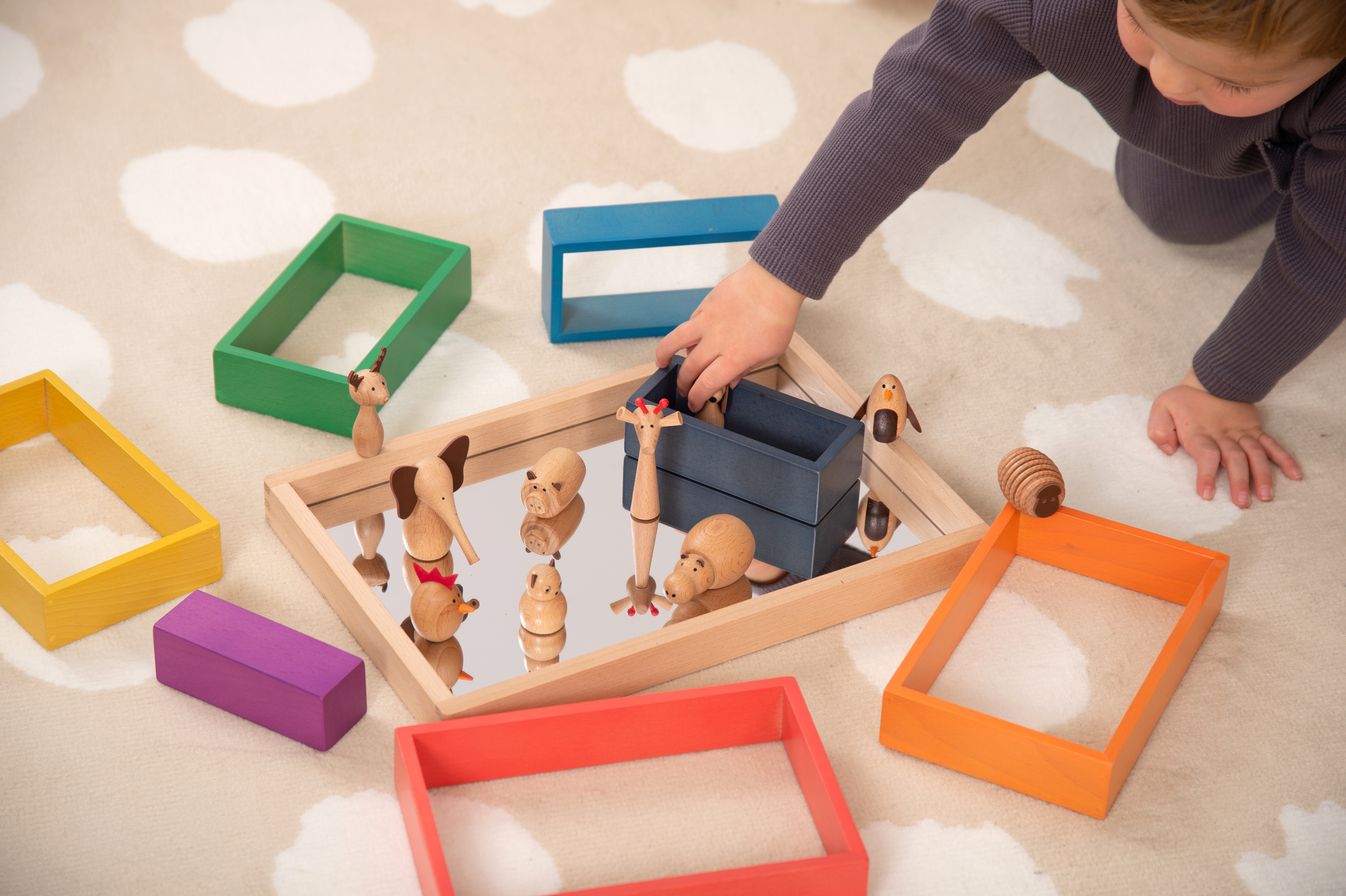
Small world play is rich in opportunities for language development and imaginative thinking. A wide selection of open ended resources for creating imaginary landscapes for miniature people or animals to inhabit, can go a long way towards deepening children’s play and sustaining their interests. As children immerse themselves in imaginary worlds, their stories will be rich with descriptive language.
Although it can be tempting to set up your own small world play scenes for children, the best set ups come from children’s imaginations. Fabrics and objects of different colours and textures, offer rich sensory experiences that will stimulate story language.
With a focus on developing communication and language post-Covid, it is important to provide imaginary play experiences based around children’s interests. This could be as simple as sticking a photo of each child on a wooden block so that they can recreate their own stories. They might use their block to take their dog for a walk or go on a train ride, talking through their narratives along the way.
Older children will create more elaborate stories with their blocks. They might go on a Bear Hunt and make a cave with tree bark or a wooden bridge.
Symbolic play
To support different stages of development, provide a mixture of realistic representations of animals and people for younger children and open ended, flexible resources for children aged two and over who are moving into symbolic play. For younger children, a horse should look like a horse. But for older children a block could become a horse.
Resources that are useful in supporting the transition from concrete to abstract thinking include TickiT’s Wooden Community Figures, made from solid beechwood, and its Rainbow Wooden Community Peoplewhich represent a diverse range of different skin tones. Use these alongside TickiT’s Rainbow Architect Set (pictured) create houses or backdrops, or create castles or towers with its Natural Wooden Architect Columns and Natural Architect Panel Set.

Stimulating the imagination
As children’s experience of the world develops through stories, the media and real life, practitioners can support these interests by providing resources that stimulate their imaginations. For example, jungle habitats, lunar landscapes, and dinosaur swamps. Provide a range of natural materials so that children can create their own small world play landscapes in tuff trays, in the sandpit, in the construction area, inside or outside. Let the children add leaves, compost, pebbles, rocks, real grass, sticks and leaves to make the scene look realistic. Or try TickiT’s Sensory Mood Discovery Table and Space Discovery Mat with its Wooden Space Adventure set.
For children with an interest in polar bears, for example, offer a selection of animals found in the Arctic, such as walrus, seals, and whales, along with land-based mammals like wolves, foxes, hares, lemmings and reindeer.
Encourage children to create a landscape around their story, offering melting ice to a water tray to represent icebergs and shredded green crepe paper to imitate plants. Or help them set up a winter landscape using TickiT’s Wooden Mirror Tray, (small model pictured) a roll of cotton wool and TickiT’s Clear Crystal Treasures, which will add height to the scene. A world map or a globe to show children where the animals live can extend the learning, and visual aids such as photographs, reference books, storybooks and TV footage will provide them with new vocabulary to use in their play.

In control
Small-world play offers children the opportunity to be in control of their play and use their imagination to make ideas happen. This is powerful for a child, whose time is often spent fitting into other people’s daily schedules and routines.
It is also useful for other areas of the curriculum. It offers children opportunities to work as part of a group; develop fine motor control and co-ordination when handling and manipulating miniature figures and count and use mathematical language in meaningful situations.
But while it is important to have resources that stimulate the children, it is crucial to plan how the adults will be involved. This includes setting the activity up with the children, thinking about how they will interact together and defining clear boundaries, so that everyone is aware of what is expected of them.
Here are some small world play resources to include in your core collection:









